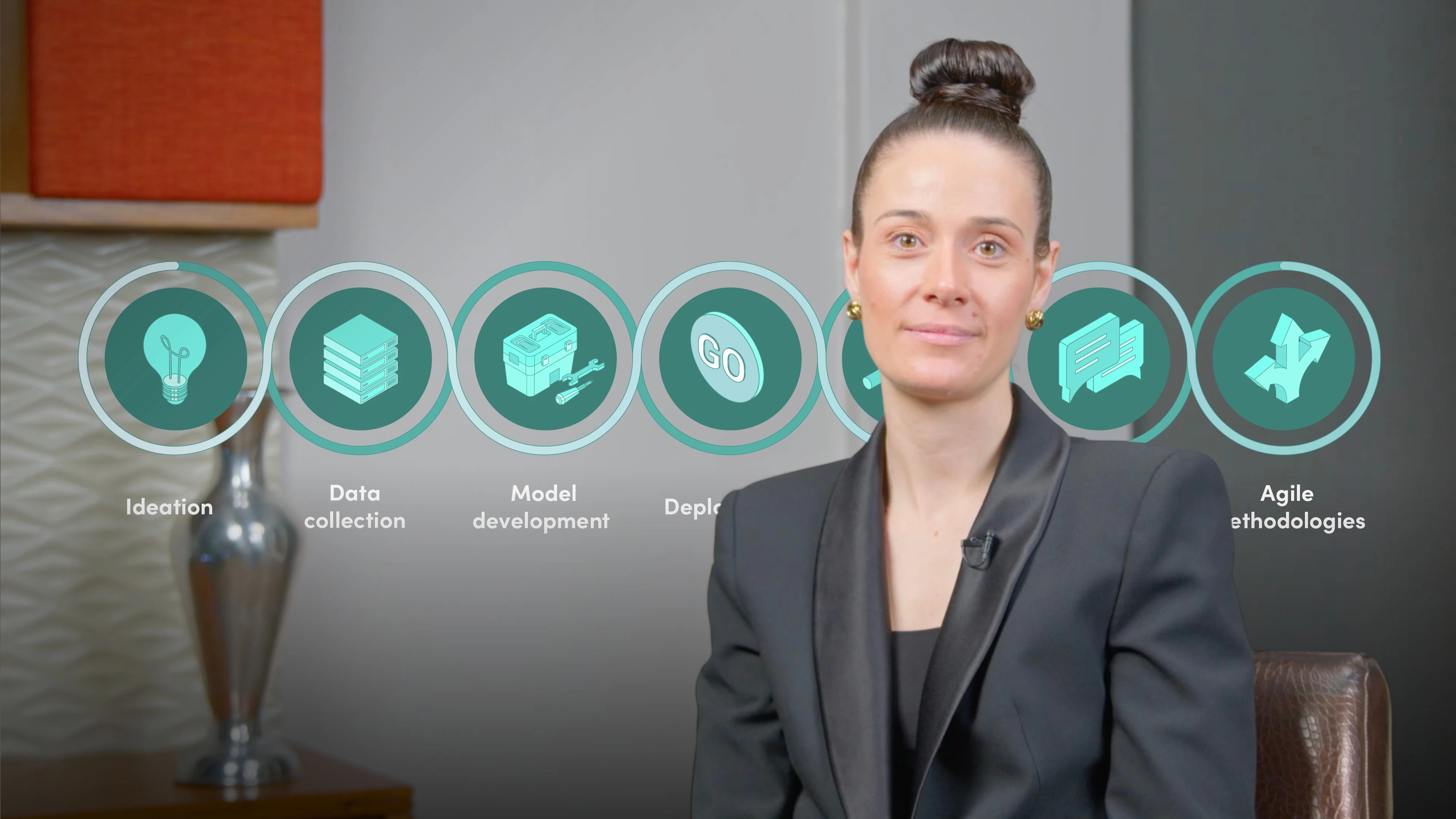
Essential data skills: Mastering causation in data-driven decision making

Prasad Gollakota
20 years: Capital markets & banking
Understanding correlation versus causation to leverage data more effectively

The most fundamental data skill everyone should master is understanding the difference between correlation and causation. It sounds so obvious and yet every day there are magnificent examples of how people get this wrong. And sadly it seems to come with no consequence as we have become immune to its misapplication.
If I cry, I will get attention – clear cause and effect; likewise, if I cry wolf, pretending there is danger when there isn’t, eventually people stop responding. This, too, is cause and effect. Correlation, however, takes years to master, and is one that most people never truly understand: they continue to misapply a correlative relationship as a causative relationship. Cardinal error.
Understanding correlation vs causation
Think about peak summer; sales of both ice cream and sunblock go up. Are people buying sunblock because they bought ice cream? Of course not. What's really happening here is correlation, not causation. Ice cream sales and sunblock sales both increase during sunny, hot weather. The underlying cause is the weather, not the ice cream itself. This is a classic example of confusing correlation (two variables moving together) with causation (one variable directly affecting another). And this type of confusion is happening all the time.
This problem is heightened now more than ever as we live in the information age where data is in peak consumption. For anyone learning how to work with AI or data, grasping the difference between correlation and causation is foundational. It goes beyond just knowing the terms: it's about developing the habit of critical thinking. Without this distinction, you risk drawing conclusions that feel data-driven but are fundamentally flawed. You might build reports, dashboards, or strategies that reflect patterns, but not truths.
Understanding this difference is what transforms you from a data user into a data thinker. It is this that allows you to move from only reporting what happened to uncovering why it happened — and that shift is where real insight lives.
The lesson is clear: observe correlations, but always investigate deeper to identify true causes before making critical life or business decisions.
Why correlation vs causation is so hard to grasp
I don’t want to pick on marketers, but for the purposes of illustration I will use our beloved colleagues as an example of where this confusion is at its peak (although marketers are certainly not alone in this confusion).
Most marketers know that correlation isn’t the same as causation. But they still fall into the trap. Not because they’re careless or uninformed, but because they’re human. Our instincts are narrative-driven. We’re built to make sense of the world by connecting events.
When a marketing campaign launches and sales go up the same week, it feels obvious: "The campaign worked." There's a clear before and after, and the numbers seem to tell a satisfying story. But stories, however persuasive, aren’t always true.
The brain doesn’t like randomness. We’re uncomfortable with ambiguity. So we seek patterns. This cognitive bias leads us to assign causality to sequences of events, even when the relationship is coincidental. This can then lead teams to confidently act on misleading conclusions.
So, why does this happen? And how can marketers reframe their thinking to avoid this common pitfall?
The problem with observational data
In marketing, the data we rely on is almost always observational. That means we’re looking at what happened in the real world, without having control over all the variables involved. We didn’t isolate one specific input and measure its precise impact while holding everything else constant. Instead, we launched a campaign, and lots of things were happening at the same time: promotions, competitor activity, seasonality, influencer mentions, algorithm shifts, and more.
Imagine this: you send out an email campaign on Monday morning. By Thursday, sales are up 20%. The dashboard looks great. It’s tempting to conclude that the email caused the spike. Maybe it did. But unless you’ve carefully tracked user behaviour, segmented audiences, or run a controlled experiment, you can’t say for sure. Maybe your product got picked up in a viral TikTok post. Maybe a competitor ran out of stock, pushing customers your way. Maybe the sales increase started before the email even went out.
The reality is, observational data can only tell you that two things happened at the same time. It can’t tell you why.

The campaign trap
Let’s stick with the email example. Say your team is excited about the 20% boost. Leadership is impressed. The campaign is hailed as a success, and the strategy is scaled across other channels. More money is allocated. Future decisions hinge on this "win". But let’s rewind and ask: did you track how many conversions actually came through the email? Did you segment users who received it versus those who didn’t? Did you run a holdout group to establish a baseline? If not, you're likely building your strategy on assumptions.
This is the trap of acting on correlation. You’re reacting to a pattern without testing the cause. And if you’re wrong, you might double down on something that wasn’t actually responsible for the result. Or worse, you might dismiss a genuinely effective campaign that simply coincided with a dip due to external factors.
These kinds of errors don’t just misallocate budget. They shape long-term strategies, team priorities, even hiring decisions. A few misplaced assumptions can set a business on a misinformed course for quarters at a time.
Why this feels so natural
It’s important to recognise that none of this happens because people are careless. It happens because the human mind is incredibly skilled at making fast decisions from limited information. We evolved to act on patterns quickly — because in many real-world situations, that was a survival advantage. In modern business, though, that same instinct can betray us.
Marketing data is noisy. It’s full of confounding factors. And yet, the pressure to attribute outcomes, and prove ROI, is high. So we simplify. We draw arrows from campaign launch to conversion-rate change. We create attribution models that feel more precise than they actually are. And we start making decisions on the assumption that the data tells us not just what happened, but why it happened.
But in most cases, the data doesn’t tell us that. It shows associations. It shows movement. And then it hands the baton over to us to do the harder work: interpreting it critically.
Shifting to a causal mindset
What can marketers do instead? How do we shift from easy stories to grounded insights?
The key is to train ourselves to ask a better question. Instead of jumping to, "Did this campaign cause the result?", we ask: “What evidence would I need to see to believe this campaign caused the result?”
That question immediately reframes the conversation. It encourages curiosity instead of assumption. It opens the door to clearer methodologies and controlled testing — for example, A/B testing, holdout groups, matched comparisons, time-series analysis.
Sometimes, the answer will be: we can’t be sure. And that’s okay. In fact, it’s better than pretending. Because once you accept that correlation is not proof, you start designing your marketing activity in a way that gives you cleaner signals next time.
How to make better data decisions
High-performing marketing teams are cautious narrators. They don’t oversell what the data says. They understand that uncertainty is part of the process. That makes them better decision-makers, not weaker ones. They treat every signal as a clue, not a conclusion. They apply rigour when the stakes are high. And when they can’t run a true experiment, they at least look for ways to rule out the obvious confounders.
They also communicate with nuance: "We saw a strong lift in conversions during the campaign period, and while we can’t isolate causality with full confidence, the supporting indicators (channel attribution, pre/post comparisons, user behaviour) make it a plausible driver."
This kind of thinking isn’t hesitant. It’s honest. And that honesty is the bedrock of scalable marketing performance.
This applies to all of us
And for those that have read into this “thank goodness I’m not in marketing, this does not apply to me”, you are setting yourself up for doom. Every single big decision you make, whether personal or in the business context, has a cause and effect relationship – you invest your hard earned savings into Tesla shares because you think it’ll go up. You buy solar panels because you believe it is less carbon intensive than alternatives. You send your kids to good schools because you believe they will perform better, and that will set them up for success.
Understanding the difference between correlation and causation isn’t just a statistical quirk. It’s a mindset shift. One that asks each of us to slow down, challenge our instincts, and demand more from the data before jumping to conclusions. In a world full of noise, true insight comes from discipline. It comes from resisting the seductive story and doing the harder work of asking: "Could it be something else?" and "What would make us confident this is real?"
In the end, great decision making is grounded in understanding the potential consequences. Fine tuning your grasp of cause and correlation will not only better inform your own future, but it will also drive the success of any business function in which you work.

Prasad Gollakota
Share "Essential data skills: Mastering causation in data-driven decision making" on
Latest Insights

Five inconvenient truths: Balancing AI and human skills for effective learning
9th May 2025 • Prasad Gollakota

Beyond the fear of AI: The role for learning in the data-driven business
27th March 2025 • Henry White














